This site is best viewed at 1280x1024
Galle Crater (Happy Face Crater): Mars Civilization Evidence #98
Happy Face Crater is one of the most well known of anomalies on Mars. But the most intriguing part about this crater is not the "happy face" but the unnatural geometry that presents itself within.
The images below of Galle Crater are all from the ESA's most recent reconnaisance.
Link to orginal ESA European Space Agency image: http://esamultimedia.esa.int/images/marsexpress/247-270306-06-co-GalleCrater-01_H.jpg
Thanks to ESA/DLR/FU Berlin (G.Neukum) for use of these impressive images.
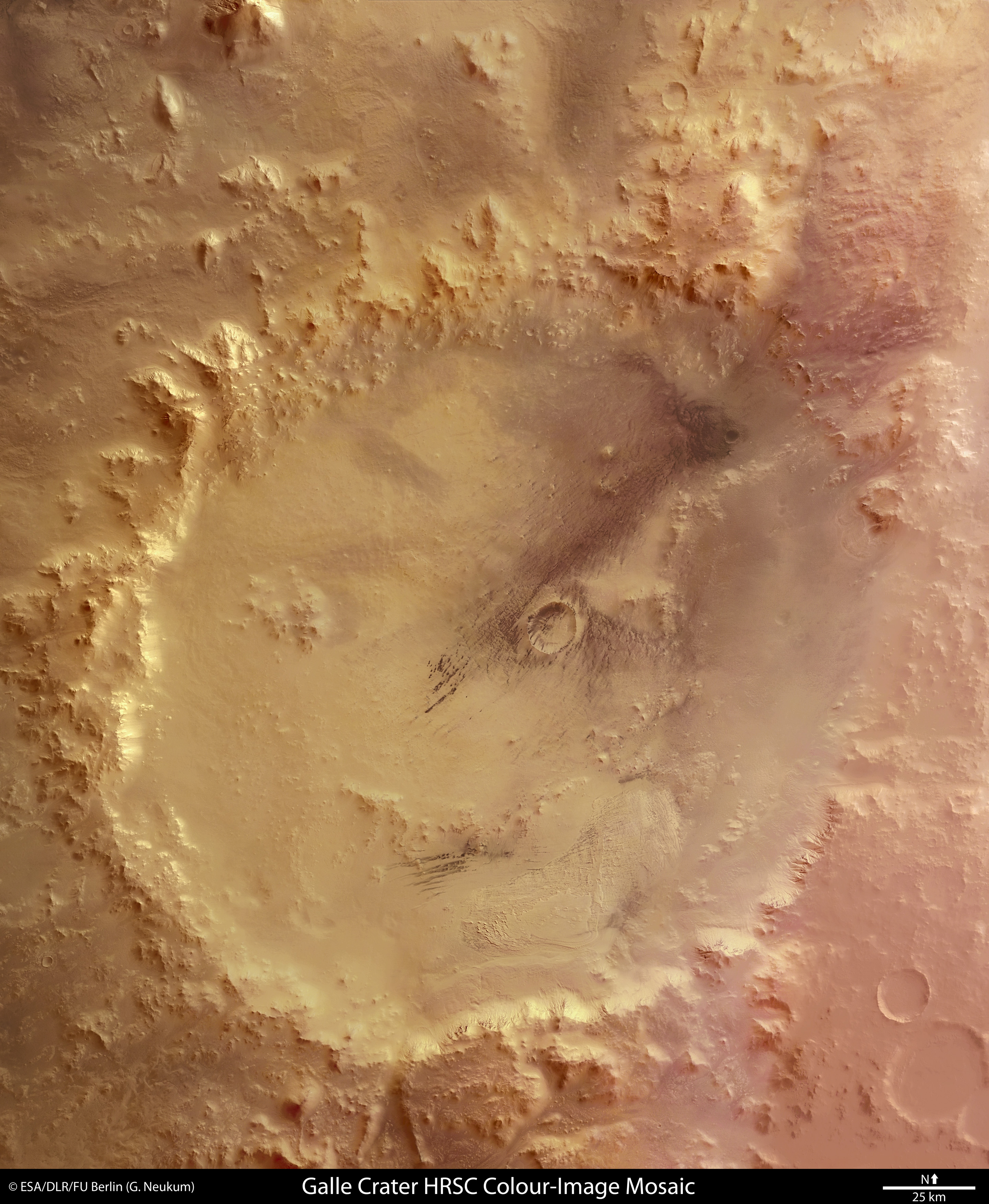
The image above is looking straight down on Happy Face Crater. The black dots around the right eye and lower lip appear to be dunes.
The next image is looking at the area below the "smile."
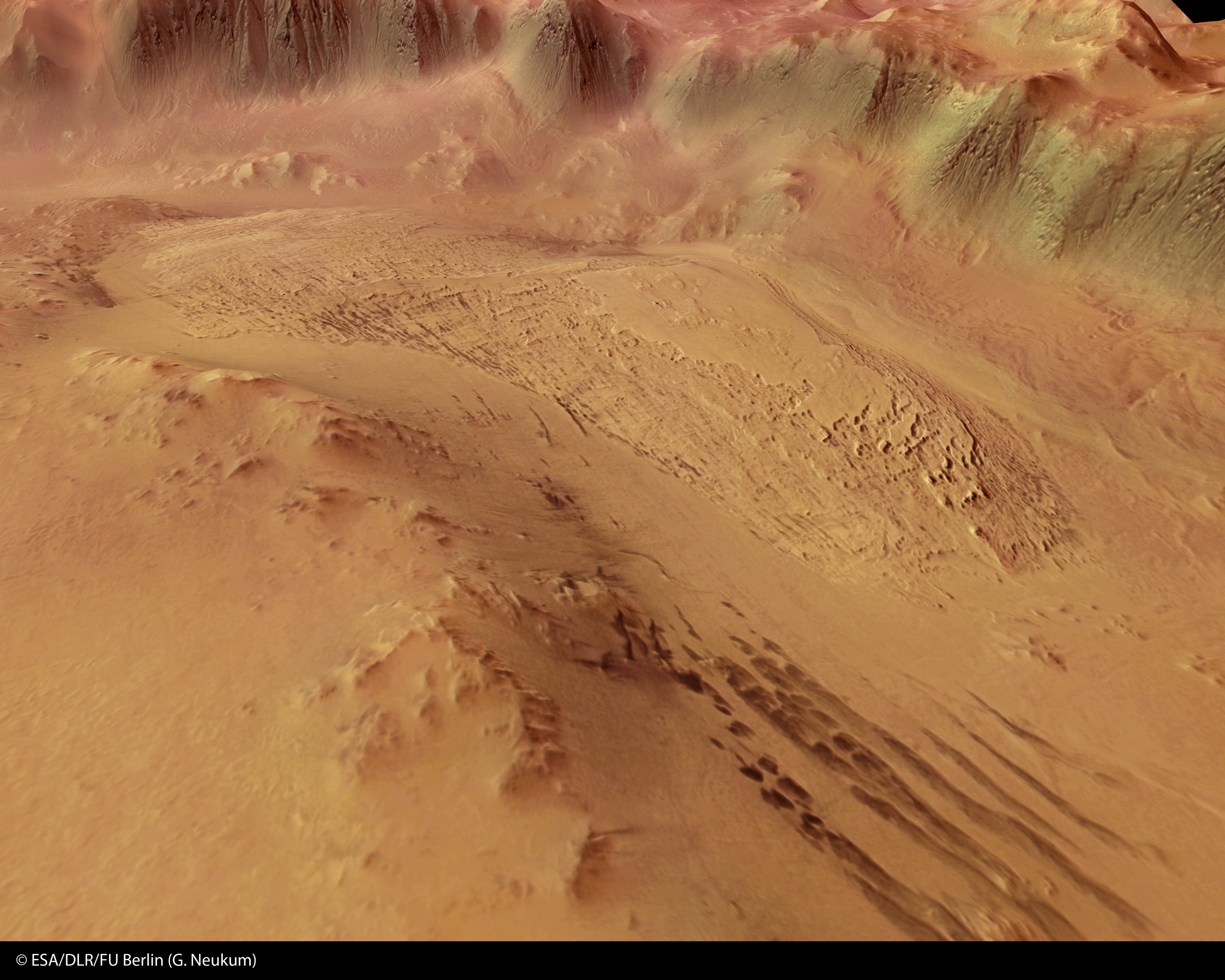
Here is a close-up of the "Martian city ruins" below the smile in high contrast grey scale.

Where the geometry is revealed through the sand and erosion, there appears to be a regular city grid geometry.
Here is another nice closeup.

And another. Just buried rocks?
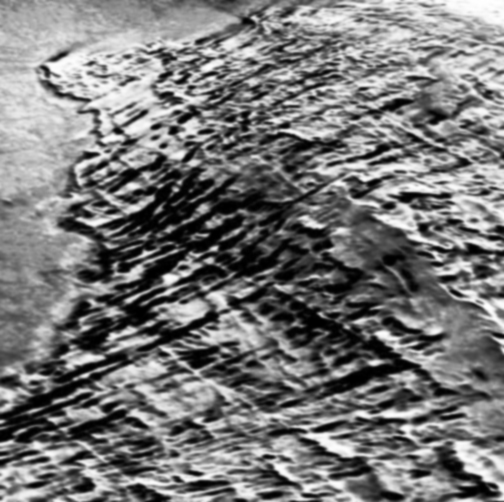
The geometry of the landscape is undeniable.
Here is a comparison with Earth ruins buried under sand.
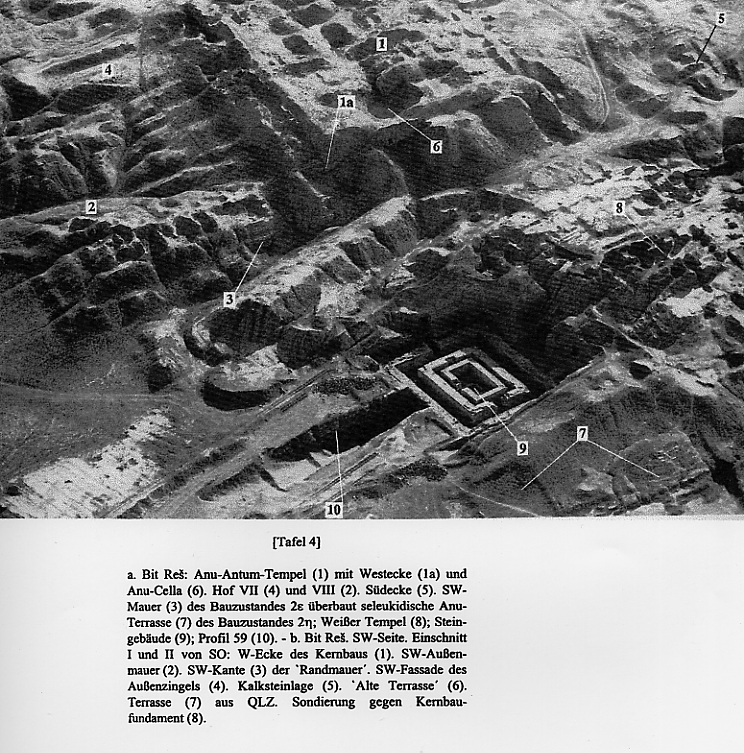
See any similiarities?
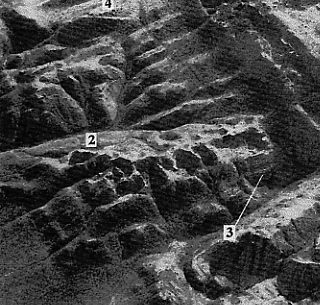
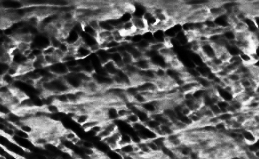
Below is an image from the ESA looking almost directly down at the "Martian ruins".
Even with this more honest look at the area, the ruins, in a number of regions, still seem readily apparent.
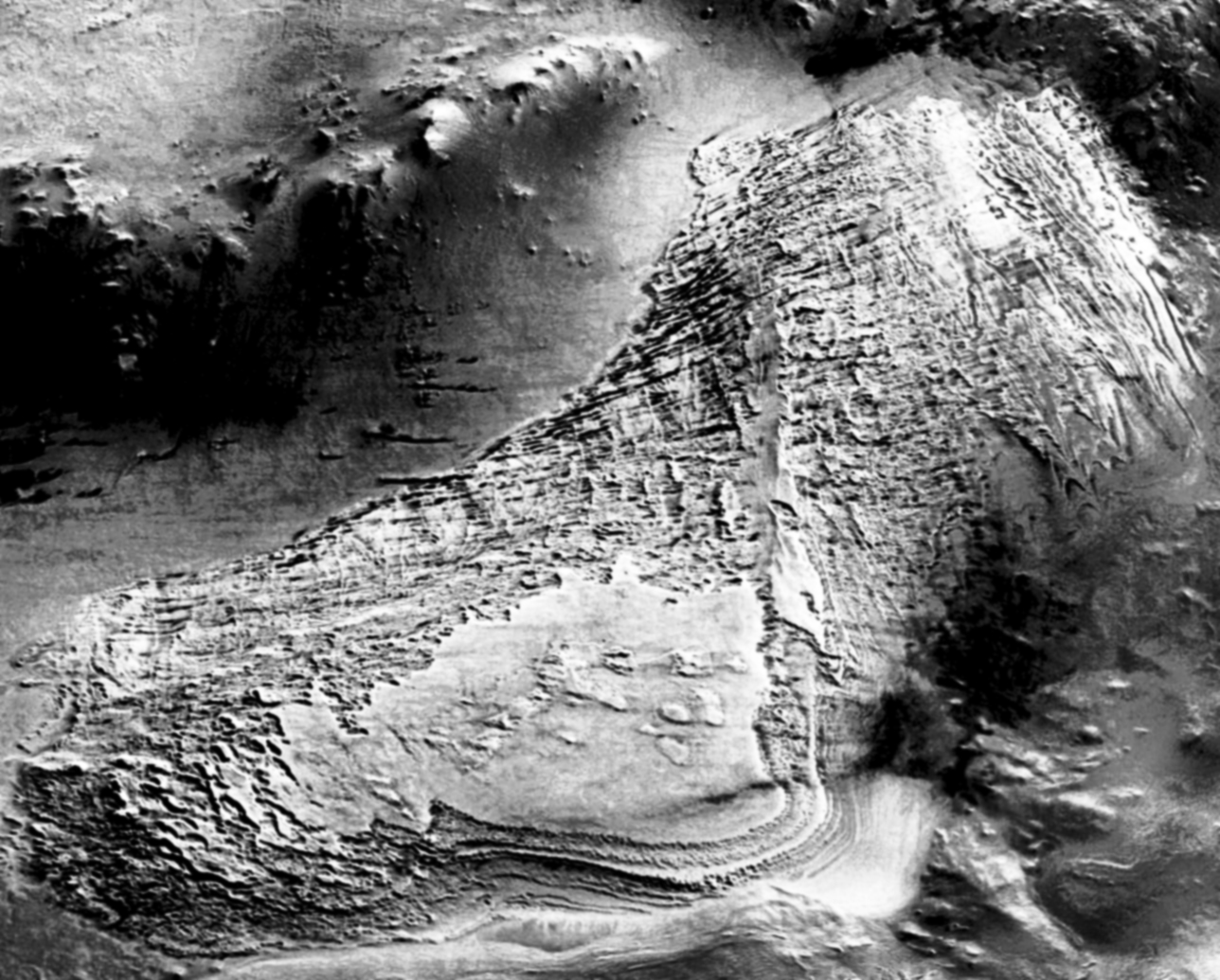
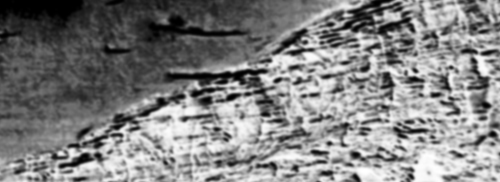
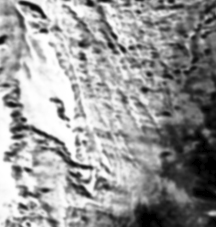
Here is a view looking from the bottom of the crater towards the eyes of the Happy Face.
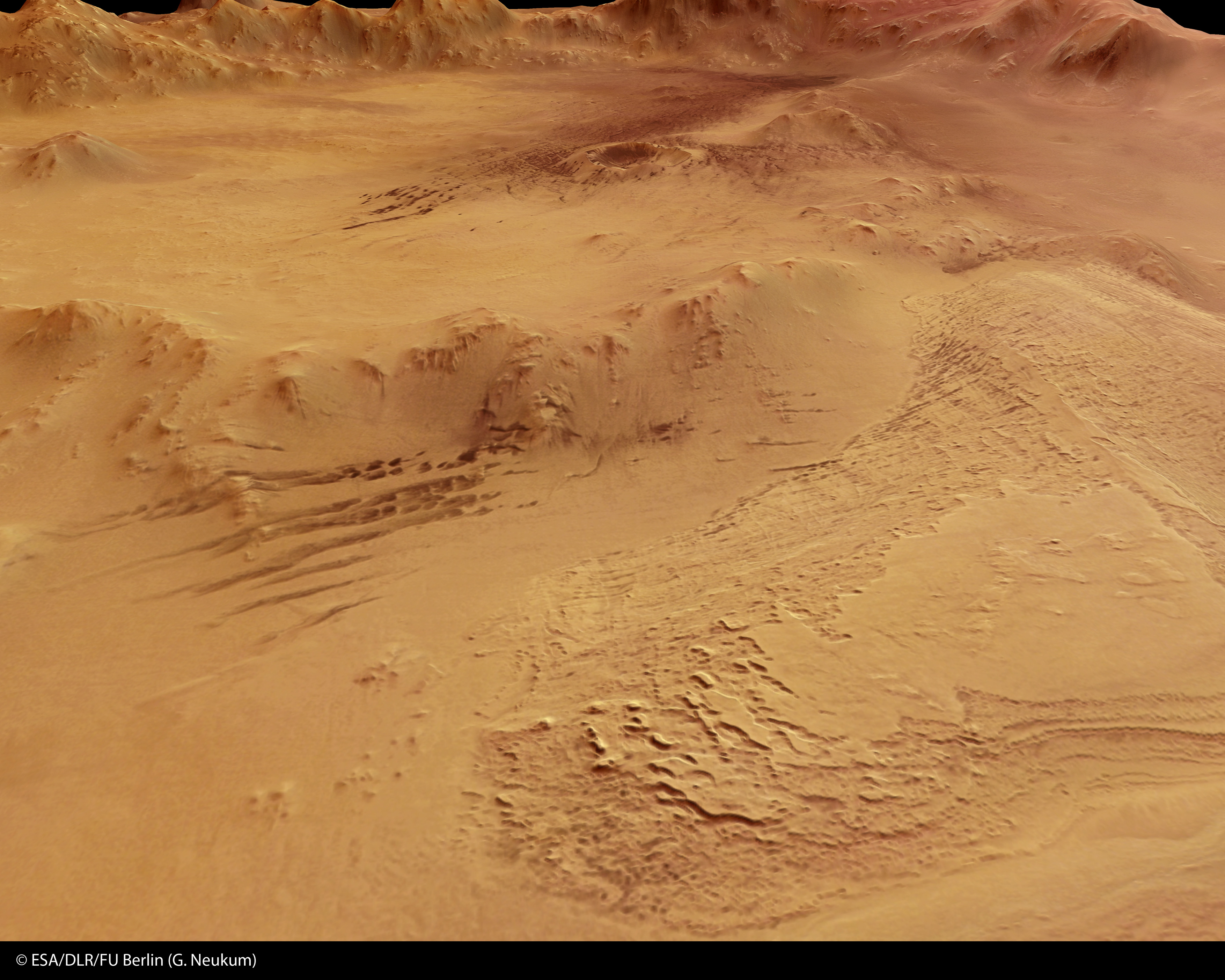
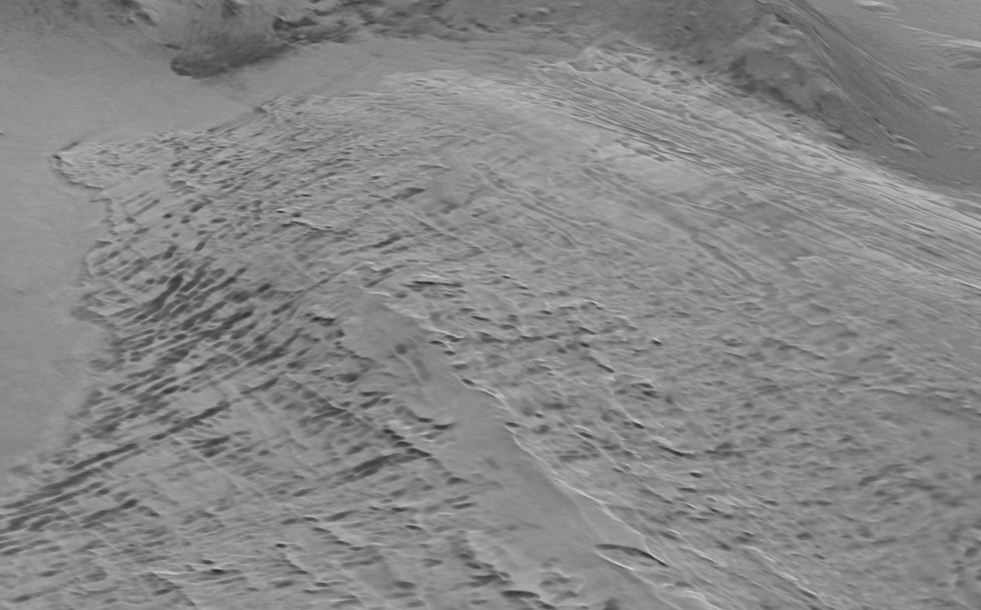
Below is the former image in high contrast.
Could this truly be an ancient Martian city covered in sand?
As many NASA satellite images of Earth show, civilization ruins can be readily visible even beneath quite a bit of sand.
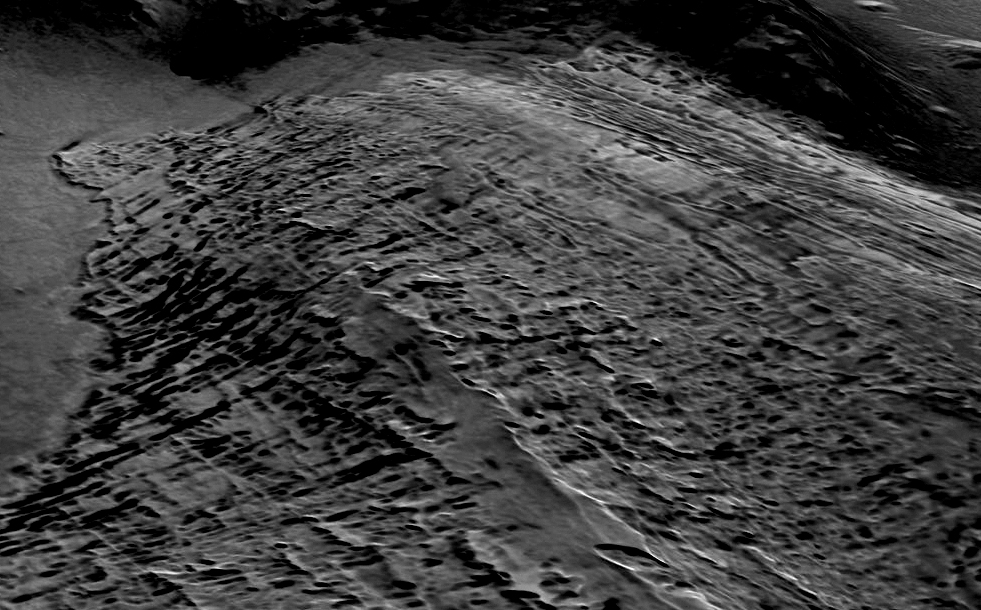
Below is a closeup at the top of the city ruins to show the anomalous geometry.
It appears as a cityscape striving to get every inch out of the rough terrain it occupies; pushing against its boundaries to the maximum.
Below is an example, perhaps, of the borders being found.
Left is unfiltered, right is inverted to demonstrate the absoluteness of the geometry.
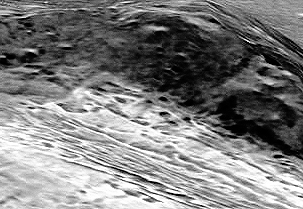
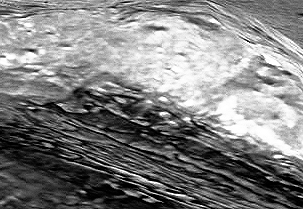
This geometry can't possibly be natural, can it?
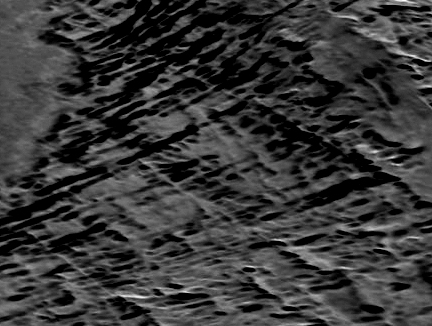
A landscape of two squares with more squares inside of them and an abundance of other anomalies.
The regularity of multiple geometric anomalies is intriguing.
Do we often see such compelling geomety in nature on Earth? Sometimes. But not often.
Do those similiarities necessarily explain what we are seeing on Mars in Happy Face Crater?

Look at the edges, and shadows. The right angles. Are these the results of a natural process or of a city planner?
Below is a closeup of the original ESA color image of the Happy Face Crater.
The geometric area on the left is hard to explain as anything other than unnatural.
How do so many right angles appear next to each other in nature?
Intelligent life loves right angles, it is his control over nature. Nature is far more random and mysterious. It rarely finds beauty in perfect control.

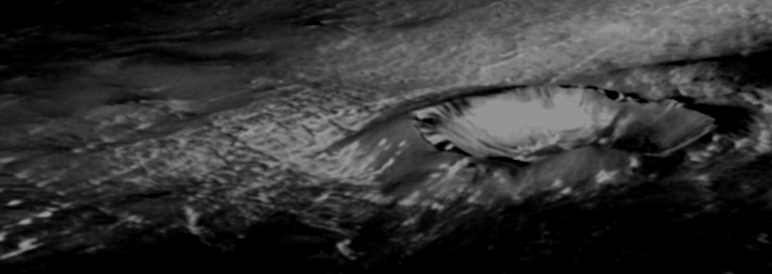
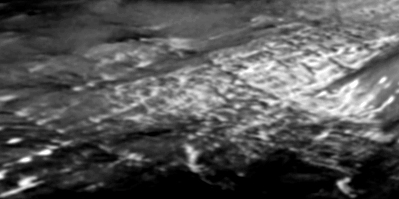
You would suspect that if a city was built around a crater, that its citizens might also find ways to develop the interior of the crater.
Here are some closeups of the crater from the first Happy Face Crater picture shown.
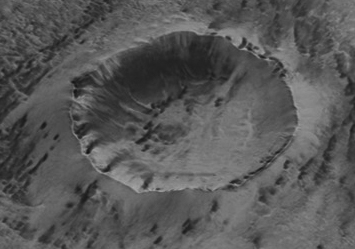
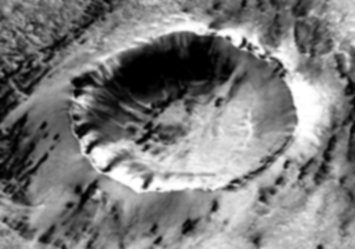
Notice the tube connecting from the inside of the crater into the wall of the crater. Could this have been some kind of city maintenance plant?


Below is a closeup of the crater from an anaglyph image provided by the ESA. It has been brightened and enlarged.
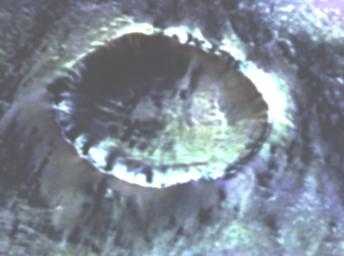
Are those the normal straight lines and right angles found inside of a crater?
Below is an interesting image. Is that a geometric piece of architecture buried under the sliding side of a mountain of sand and debris?
It is top middle left. The geometry is intriguing. Could it be a hexagonal rooftop?
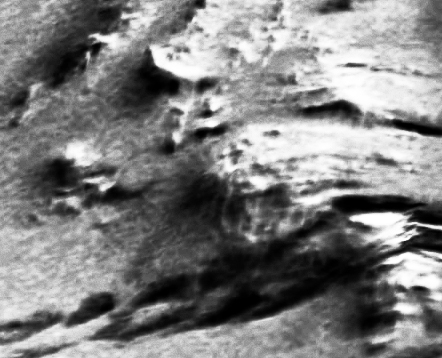
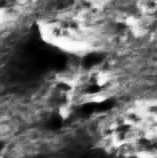
The blurring in the image above was in the original ESA version.
Below is another area of architecture that looks like it was buried beneath the sand. Is that alien architecture?
What natural process could have created the three ribbed formation at the bottom of the image?
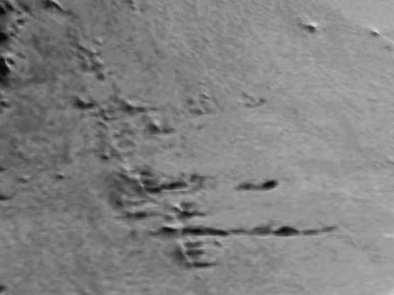
Below is a landslide area.
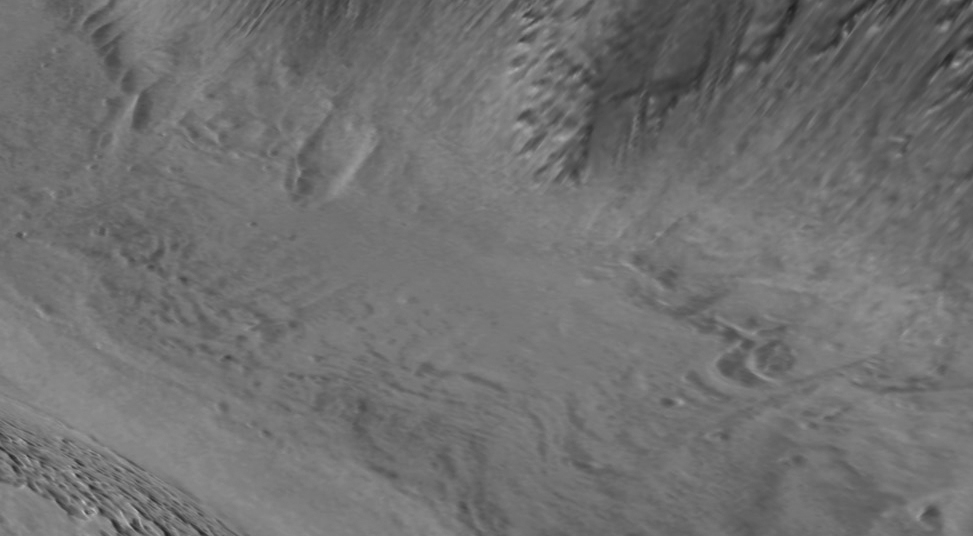
And the landslides appear to have uncovered a number of anomalies.
What is the arched area to the bottom right?
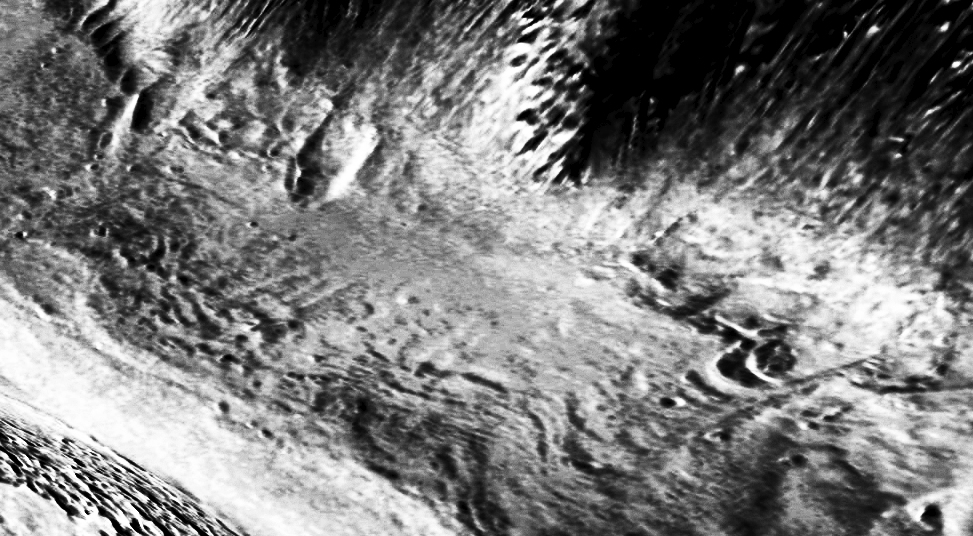
Is this a natural formation, or the remains of an ancient architecture?
Here is a closeup.
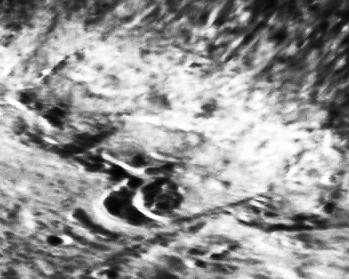
And what is this?
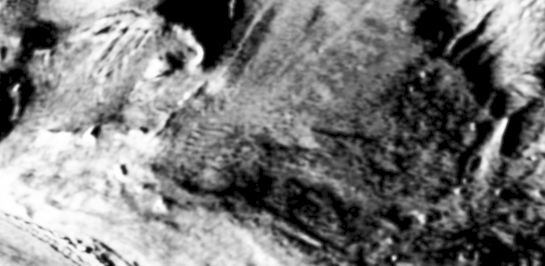
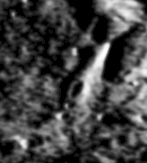
Next is an image of the distant mountains.
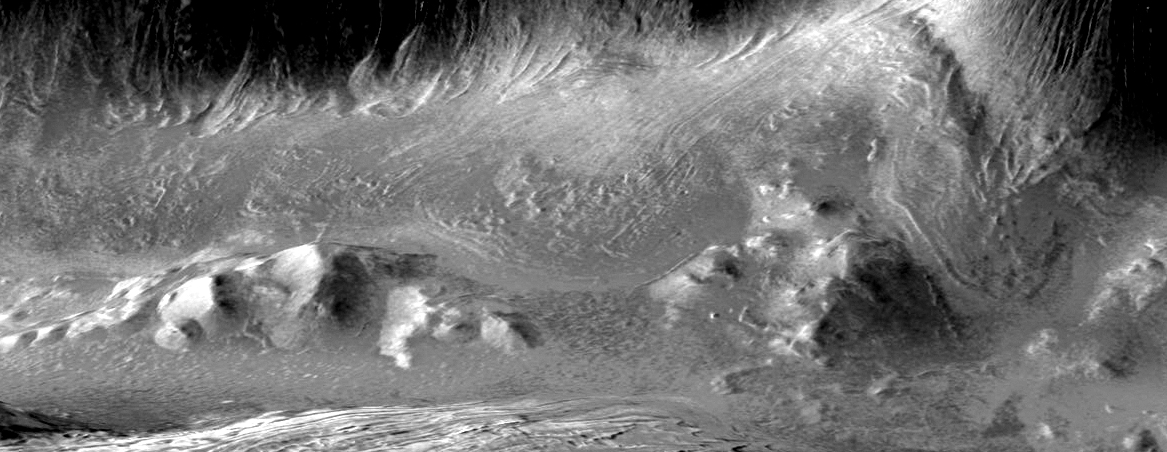
A closeup. Equalized.
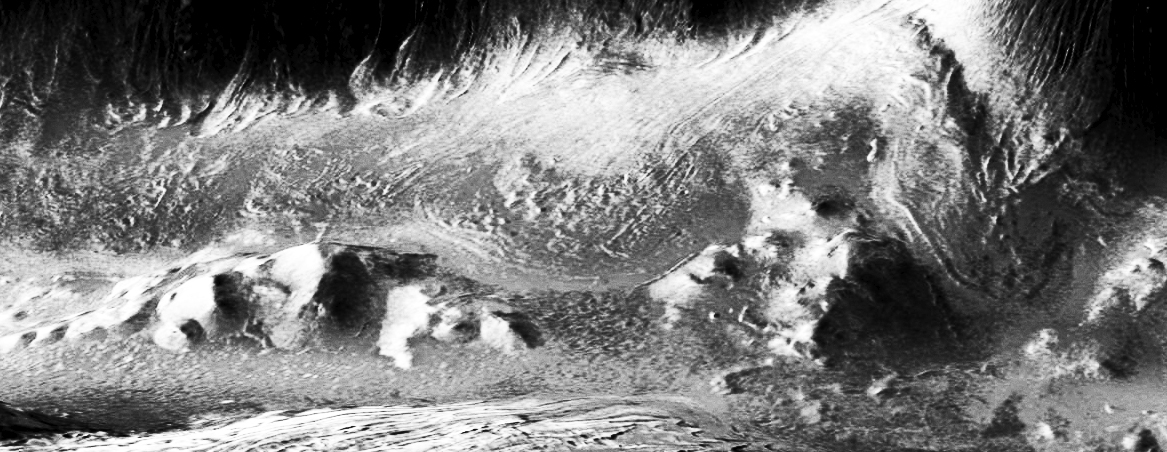
Here is another part of the horizon.
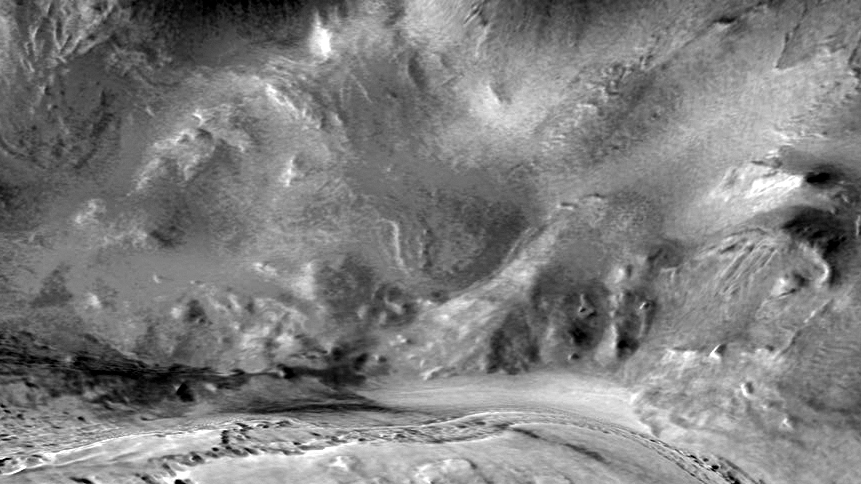
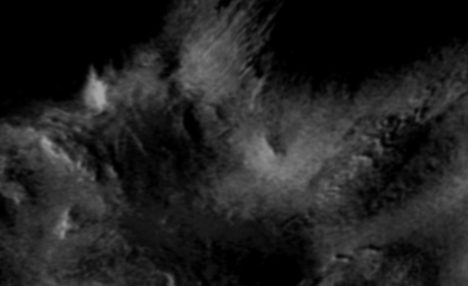
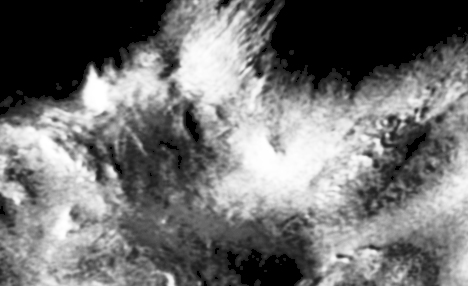
Welcome to Mars Ruins
